RX 9070 and 9070 XT: AMD's Bet to Compete With Nvidia
AMD recently announced its new video card. But will it compete against the new line of Nvidia?
GAMER NEWSPC 2025TECHNOLOGYGAMESNVIDIAAMDRADEON
3/3/20255 min read
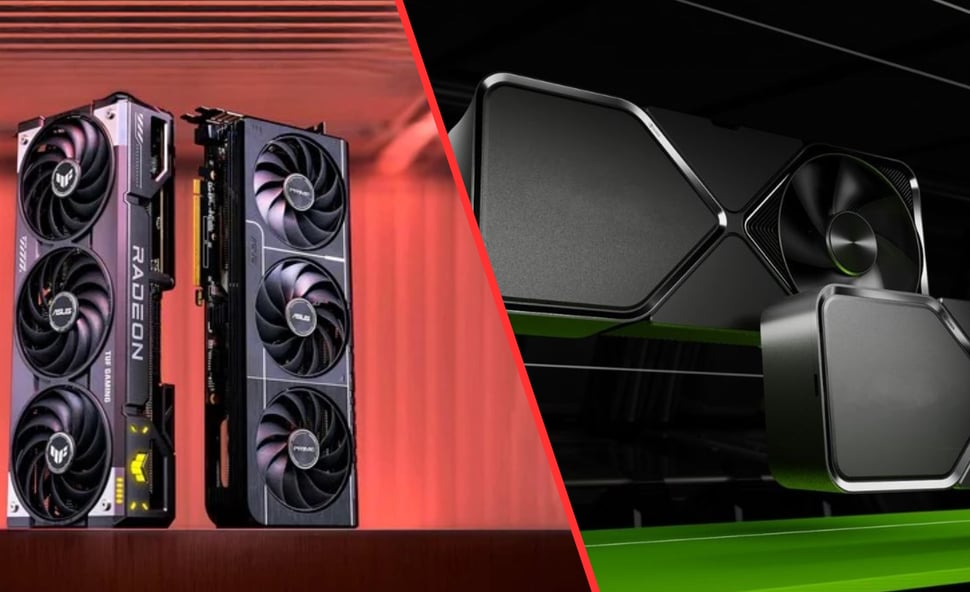

AMD broadcast a broadcast on February 28 on YouTube where it presented its new generation of video cards, the RX 9070 and 9070 XT, where it commented on the improvements presented and the performance of your product. Using artificial intelligence to improve performance, AMD seeks to make a graphic plate that is able to compete with its competitor, Nvidia, which has most of the component computers market. However, will the Radeon 9000 series be able to hit Nvidia's 40 or 50 series?
What are the observed improvements?
The event pointed out several improvements compared to RX, such as the architecture used, performance, energy efficiency and support for new technologies, as well as the price that will come to the market.
The next generation of AMD GPUS is based on RDNA 4 architecture, which brings refinements compared to RDNA 3. If a significant increase in Watt performance, allowing more powerful plates with lower energy consumption. With new computing nuclei and an improved memory cache, with a space of 16 GB that, although it seems little, It will feature the GDDR6 technology which is lower than the type of memory present in the NVIDIA Series 40 which has the same size of space but with the GDDR6X memory type. The RDNA 4 development process has been conceived thanks to a partnership with Sony Interactive Entertainment that helped AMD build this new technology present in the GPUs.
One of AMD's main challenges in recent years has been Ray Tracing, a technology that significantly improves light and shadow effects on games that requires a lot of GPU. With the new generation, a great leap in the performance of this technology is expected, reducing the difference from Nvidia's GPUs. AMD should also bet even more on FidelityFX Super Resolution (FSR), its upscaling solution that competes with Nvidia's DLSS technology, which will promise to deliver more quality and performance to high resolutions.
Energy efficiency is one of the critical factors in which AMD is widely criticized, with its GPUs consuming a lot of energy, especially when placed a higher graphic configuration in a game. AMD has invested in a more refined manufacturing process and architectural improvements that ensure reduced consumption without compromising performance. The new GPUs would come with 8 pins of energy connectors that would decrease the chance of melting cables, a problem observed in Nvidia's 50 Series. This makes the new plates ideal for both gamers and professionals who need high processing power without excessively raising energy spending, an audience in which AMD seeks to attract more with its new graphics card.
According to Andrej Zdravkovic, GPU's senior vice president and software director at AMD: "Although FSR is an amazing solution for games that provides the best experiences, we know that there are thousands of other games in which players want the most performance. And that's where HYPR-RX comes in. "According to Andrej, the new graphics cards will come with support for new technologies such as HYPR-RX, a tool that enables a set of features that will increase performance and reduce latency, other than that Andrej said AMD is working to add new features to HYPR-RX that will increase performance and improve the image. The tool could supposedly increase the number of frames for certain games that require more at 4K, the example used being the Kingdom game starts Deliverance 2 that could have an increase of 2.6x FPS. Latency reduction was also pointed out to be 8.5 ms, 42% latency reduction in the game Apex Legends in which it was used as an example.
See below the main graphics presented during the event showing the performance of the new GPU:
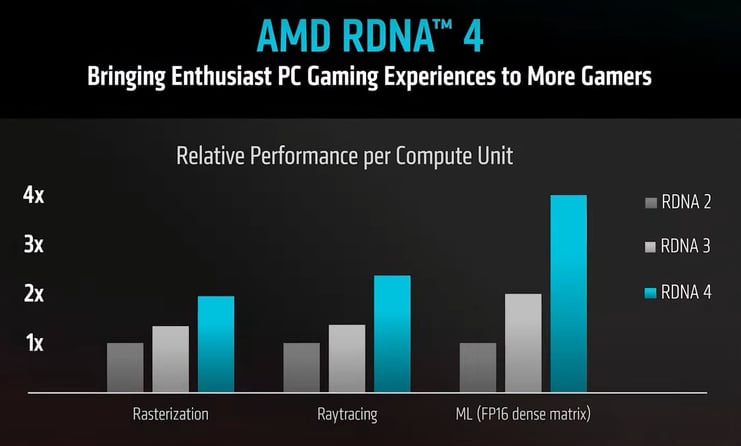

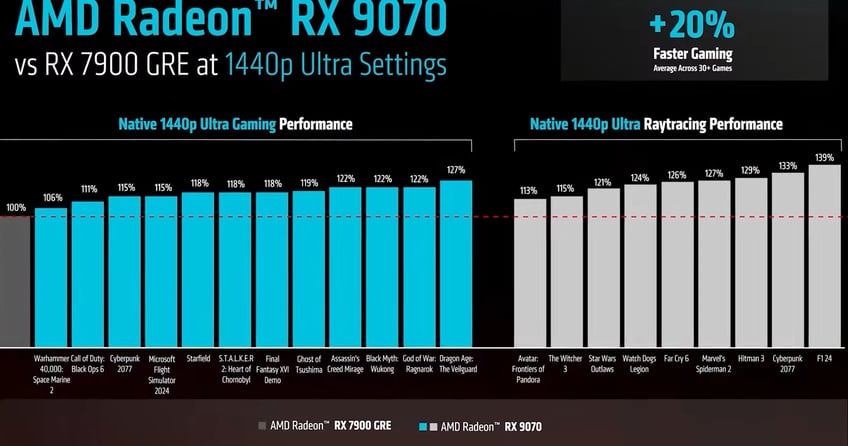

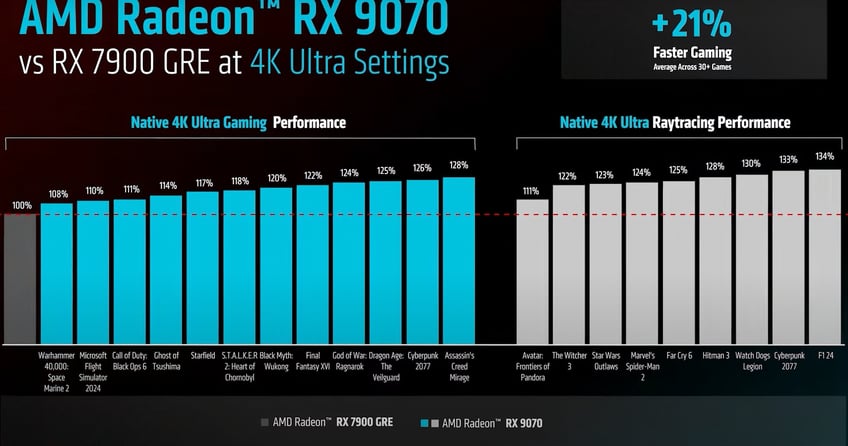

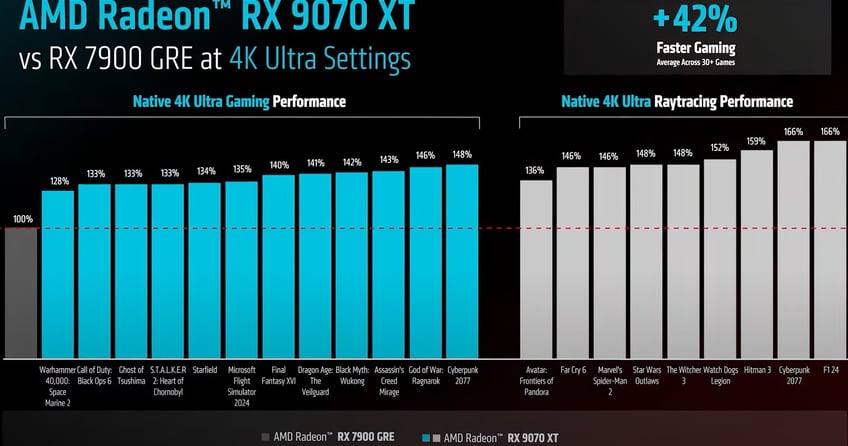

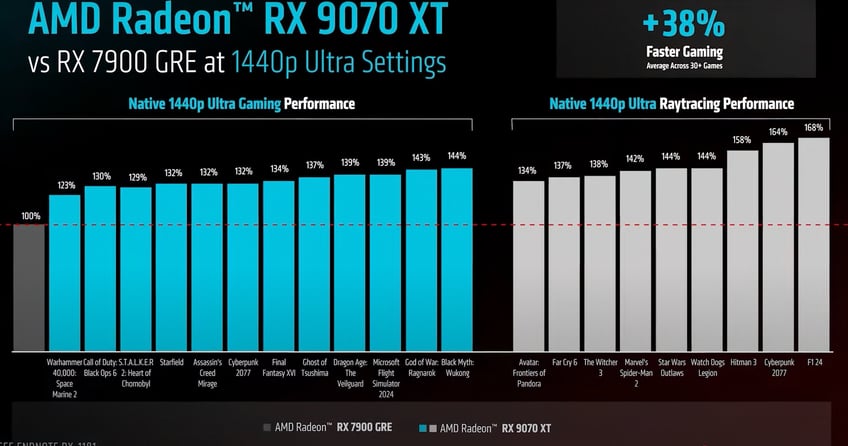

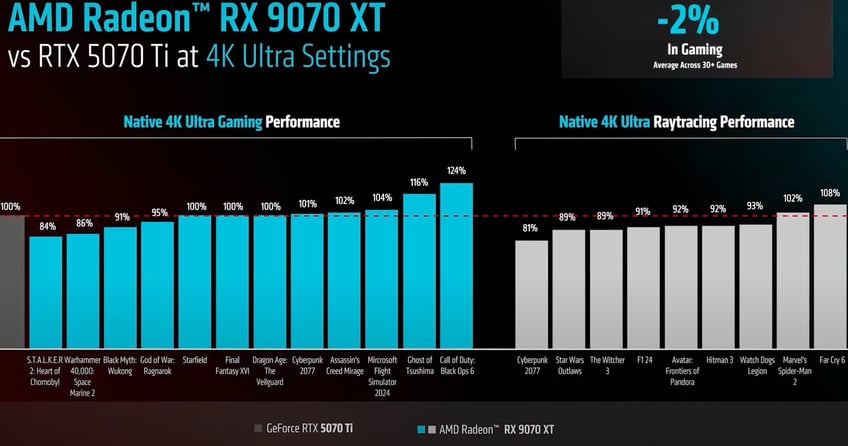

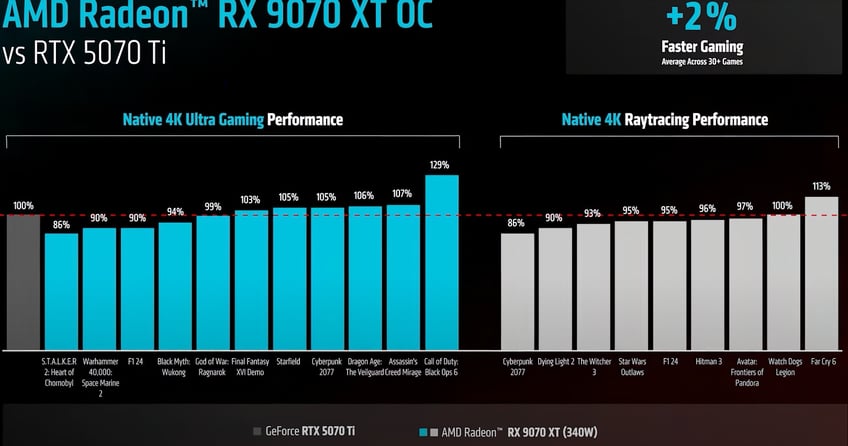

AMD transmission on Youtube:

Source: Graph showing the performance evolution of RDNA/AMD Gaming YouTube technology
Source: Graph comparing RX 9070 with RX 7900 GRE in 4K/AMD Gaming YouTube
Source: Graph comparing RX 9070 with RX 7900 GRE in 1440p/AMD Gaming YouTube
Source: Graph comparing RX 9070 XT with RX 7900 GRE in 4k/AMD Gaming YouTube
Source: Graph comparing RX 9070 XT with RX 7900 GRE in 1440p/AMD Gaming YouTube
Source: Graph comparing RX 9070 XT with RTX 5070 Ti in 4K/AMD Gaming YouTube
Source: Graph Comparing the RX 9070 XT model with 340W consumption with RTX 5070 Ti in 4K/AMD Gaming YouTube
Source: All You Need for Gaming – AMD RDNA™ 4 and RX 9000 Series Reveal/AMD Gaming Youtube
Can the AMD 9000 Series Impact Nvidia?
With the evolution of GPUS AMD, the video card market can undergo a significant transformation. AMD has been increasingly approaching Nvidia in terms of performance and efficiency, offering competitive solutions at a generally more affordable cost. If the new generation of GPUS maintains this trend, AMD may attract a larger portion of the gamer and professional audience, pressuring Nvidia to readjust its price strategy and technological development.
In addition, increasing adoption of technologies such as FSR can decrease developers' dependence on NVIDIA DLSS, further balancing competition in the image upscaling sector. This dispute promises to directly benefit consumers, who will have more high performance options without necessarily paying a huge price. Speaking of price, AMD's new GPUs have a more attractive price in relation to Nvidia's GPUs, being the RX 9070 sold for $ 549 and the RX 9070 XT for $ 599.
We must also remember that despite these promises the company made about its new video card, we should not trust them 100%, since Nvidia herself made grandiose promises to her new 50 series and it turned out that graphic plates were dependent on AIs features to perform a good performance and being the weaker generation from the point of view of evolution to the present day. AMD may well do the same thing as NVIDIA to generate engagement and sales to the company, apart from AI resources that can deliver "fake frames" and other problems in which Nvidia faced.
Despite these doubts in which we consumers we think, AMD has a unique opportunity to get more public and gain more space in the market, taking advantage of the mistakes in which its competitor has recently made and the feeling of dissatisfaction of the customers who buy these components. AMD's idea is to get public support from these graphic plates that, still being weak compared to RTX 5080 or 5090, they present new technologies that can make Radeon plates deliver good performance at a more affordable price and, after gaining customer support, they would bring a GPU that can have a great evolution.
One thing is certain, we'll see if AMD will launch a GPU that will have a favorable performance and will democratize graphic plates with new technologies for the public on March 6 where it was scheduled for the launch of these GPUs in the market.
Tech Play Sphere
Exploring new generation innovations and games.
contact
techplaysphere@gmail.com
© 2024. All rights reserved.
